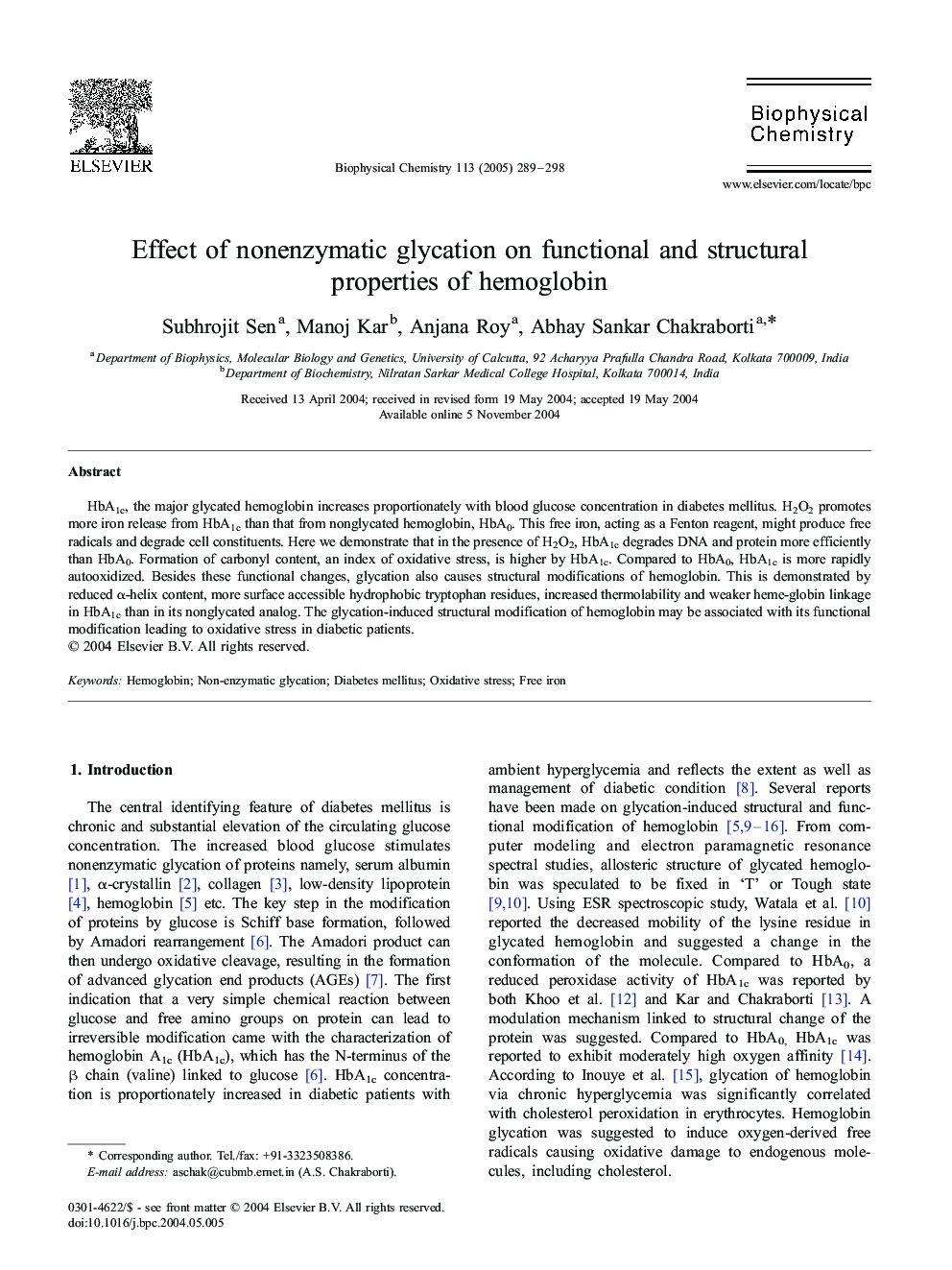| Article ID | Journal | Published Year | Pages | File Type |
|---|---|---|---|---|
| 9573620 | Biophysical Chemistry | 2005 | 10 Pages |
Abstract
HbA1c, the major glycated hemoglobin increases proportionately with blood glucose concentration in diabetes mellitus. H2O2 promotes more iron release from HbA1c than that from nonglycated hemoglobin, HbA0. This free iron, acting as a Fenton reagent, might produce free radicals and degrade cell constituents. Here we demonstrate that in the presence of H2O2, HbA1c degrades DNA and protein more efficiently than HbA0. Formation of carbonyl content, an index of oxidative stress, is higher by HbA1c. Compared to HbA0, HbA1c is more rapidly autooxidized. Besides these functional changes, glycation also causes structural modifications of hemoglobin. This is demonstrated by reduced α-helix content, more surface accessible hydrophobic tryptophan residues, increased thermolability and weaker heme-globin linkage in HbA1c than in its nonglycated analog. The glycation-induced structural modification of hemoglobin may be associated with its functional modification leading to oxidative stress in diabetic patients.
Related Topics
Physical Sciences and Engineering
Chemistry
Physical and Theoretical Chemistry
Authors
Subhrojit Sen, Manoj Kar, Anjana Roy, Abhay Sankar Chakraborti,
